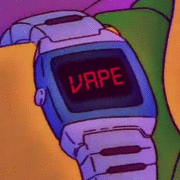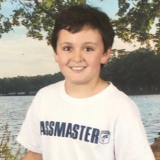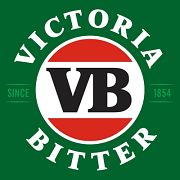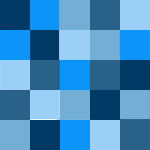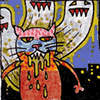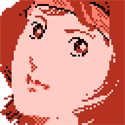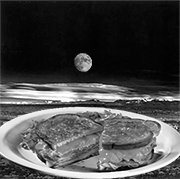|
Well, the old film thread is 15 years old and most of the links in the OP are broken so it's time to begin again. Why shoot film? There was a large resurgence in film photography around 2019 when all of a sudden it became hip and cool to shoot film again. People were chasing tones and vibes and prices went absolutely bonkers. A lot of these trend followers have since gotten out of the game and now what's left are the diseased in the head purists who'd sooner coat their own plates than pick up a digital camera, but why are they still holding on to this format? I can't speak for anyone but for myself, as a professional computer toucher, I want my hobby to be not interacting with electronics. The physicality of film, the development and printing process are what appeals to me. Other people like the look, or the fact that film makes them slow down and more actively consider their photography and how they engage with it. For others it's format dependent. Shooting large format is still a very attractive way to get into camera and lens movements. You won't know if it's a good fit for you until you try it, and I heartily recommend it. Is shooting film expensive? Generally yes, prices aren't getting any cheaper. On top of the price for the film itself you have development and scanning costs. Prices can be reduced greatly by home processing and bulk loading but that involves a quite large investment into gear and skills. In Australia, if you're shooting colour film you're looking at around $20 for a 36 exposure roll then $15 for processing and scans. If you can take care of it yourself at home, and shoot black and white, costs can come down as low as $4 a roll and 10c for processing. We all know your time is worthless. OK, I still want to give it a go, where do I start?  Well, you're going to need a camera to begin with. 35mm is the most affordable format and you can get a body and lens for as little as $30 to free if you can rummage around in your parents cupboard. There's a million choices out there but some beginner friendly cameras that won't break the bank are: SLRs with auto exposure modes (usually aperture priority)
SLRs with Light Meters but no auto modes
Notice I didn't include Nikon and Canon in these lists as they generally command a higher price than other brands due to the recognition. If anyone else has cameras they'd like to add to these lists or lists of rangefinders / point and shoots they think would be good to add let me know! You mentioned other formats, what are those?  There used to be hundreds of film formats to shoot but not any more. The film formats are broken into categories that distinguish them from 35mm. Subminature, medium format, large format and ultra large format. The biggest way formats differ is the negative size they produce, here's what you can commonly shoot today, from smallest to largest size
Generally the larger the format the more expensive it is to shoot, with the exception of 110 which is more expensive than 35mm. The larger the format the higher the resolution you can get out of the photo but also the bigger the camera. There's a lot of fun to be had shooting different formats and each give a different look. Wait, what's medium format about, why are there different sizes? Medium format is the 2nd most shot format and is a different to the others in that the camera is what sets the aspect ratio. In centimeters the common formats are 4.5x6, 6x6, 6x7 and 6x9. The larger the negative the fewer shots you get per roll out of your camera. It's the format I shoot the most of personally. Should I shoot colour or black and white? What's a good film to start with? There's 3 main styles of film development process type:
Colour negative is probably the most commonly shot type. It produces a negative image on the film base which is then scanned and inverted, colour negative also covers some special black and white films like Ilford XP2 which uses the colour development process. Colour reversal is slide film, after that's developed you have a positive image and this can be projected or scanned like colour negative. Black and white is as it sounds and also produces a negative image. There's also ECN2 process which is for cinema film and not something you generally need to worry about. Cinema film has a coating called remjet on it which needs to be removed before processing. Whenever you buy cinema film you need to know if this coating has been removed or not, and this should be clearly labelled on the film or the website you're buying from. If it hasn't been removed you need to send it off to a lab that does ECN2 processing, if it has been removed it can be processed in C41. Most importantly they're all good* and there's no best film! I recommend looking up photos online of what different film stocks look like and giving it a go. For affordability however you can't go past Kodak Gold 200, Fuji Superia, Ilford black and white films and Foma black and white films, so try starting there. There's no cheap slide film. You'll shoot a lot of different stocks before you find the ones you like the most. *except for Cinestill, you should never buy Cinestill, they're actively hostile to the community and you can read about their bullshit here. If you want to shoot cinema film you should support Reflex Lab Ok, I wanna go bigger, what medium format camera should I get? Medium format is a very different beast to 35mm, with cameras made for specific purposes. You're going to have to start thinking about things like what aspect ratios you want to shoot, how you like to compose, are you doing studio work and so forth. If you have a bit of an idea what kind of stuff you want to shoot then ask us in here and we can point you in the direction of some cameras based on what's important to you. But, there are a few cameras I really love that are generally cheap to pick up and use. Note that none of these have light meters. Most medium format cameras don't. These are:
Alright, I love film and I want to make it my personality, but how can I do it cheaper? Most of the film process you can do at home, this falls into 2 major parts, developing and scanning. How do I develop at home?  This will cover black and white development only. In my opinion (and my part of the world) C41 and E6 development is rarely worth it at home. Unless you shoot a lot of colour, about 20 rolls every 3 months or save up 20 rolls to do it all at once, it will not be demonstrably cheaper than getting the lab to process your film develop only and scanning it yourself. C41 and E6 were made to be machine processed so let the machine do it for you. For black and white development you need a few things:
For the fixer and stop bath you can buy whatever is cheapest, they both do the same thing no matter what brand you buy, same for your rinse aid. For developer I recommend Kodak HC-110 and Rodinal as they both have shelf lives into the decades do you never need to worry about your developer going bad. Developing at home is a lot easier than you might think, the black and white process was pretty much made to be done in your kitchen and by hand. Here's a video that'll walk you through the process. https://www.youtube.com/watch?v=aPQ7OPy8T2w Note. DO NOT SQUEEGEE YOUR FILM, IGNORE THAT PART OF THE VIDEO YOU WILL SCRATCH YOUR FILM If you want to know times for any particular film and developer combo then the Massive Dev Chart has you covered. What about scanning? What scanner you buy is going to be largely dependant on what negative sizes you want to scan. If you want to scan 35mm only then your best bet is a Plustek Opticfilm series. The 8000 series is the latest and is the best thing in affordable scanning for 35mm and subminiature film. If you want to save a buck you can buy second hand, then anything from the 7200i onwards is fully compatible with modern scanning software. Older and more esoteric scanners like Nikons and Minoltas can take some computer fuckery to get working, some only working under XP and relying on virtual machines. If you shoot up to medium format then the Epson V600 series can be had brand new or second hand, while it won't give as good as a result for 35mm as the Plustek it will give good results if you spend some time messing with the film height to get it just right in the narrow focus band of the scanner. This too can be had second hand. If you shoot large format, or want a nicer scan than the V600 can give you than the Epson V700 and V800 series are the way to go. The V850 is the latest and provides great results but the film holders are dogshit and you'll want to change them out ASAP to something else. Alright what's next? God you're keen, but darkroom printing, large format and alternative printing comes after all of this. There's some links below that cover those topics. But, this is still only really scratching the surface of film photography. It's a big world to explore, finding developer and film combos that work for you, push and pull processing, negative manipulation when printing, dry and wet plate processes and more. It can be pretty daunting to start with but we're here to help and answer questions so do drop in. Other Places The Medium and Large Format Thread The Darkroom Thread Mike Eckman's site is full of a tonne of camera reviews of weird and wonderful cameras, and well worth a look if you want to urge surf for something to buy that's strange and cheap. Megabound fucked around with this message at 12:16 on Nov 10, 2023 |
|
|
|

|
| # ? Apr 28, 2024 15:19 |
|
first post
|
|
|
|
ground floor etc Any tips for metering snowy scenes for slide film? I do have an incident meter.
|
|
|
|
Yay a new film thread. When the last one started, I talked about developing my own black and white film but I didnít actually start until around the end of the thread. Now I am the master developer (not really)
|
|
|
|
few things to add: - 4x5 is more common than 5x7 for large format sheets - fuji superia as another cheap film - mike eckman's site is a good resource for some weird cameras and camera history, especially if you find an old camera at a yard sale or something - e41 also includes xp2 which is black and white
|
|
|
|
Wild EEPROM posted:few things to add: Thanks for that!
|
|
|
|
Megabound posted:Most importantly they're all good* and there's no best film!** * Except Cinestill, for reasons you detailed here. ** As long as it isn't Cinestill
|
|
|
|
True, don't buy cinestill
|
|
|
|
Ziggy Smalls posted:ground floor etc general advice is underexpose by 1 - 2 stops to get texture in your snow on a sunny day but I've never shot in snow myself.
|
|
|
|
Fomapan or bust
|
|
|
|
Recoome posted:Fomapan or bust That's right     
|
|
|
|
Good op, op
|
|
|
|
Itís probably worth noting that in the US most Wal-Marts carry Fuji 400 35mm film. For those starting out itís easy to just grab some when youíre testing your camera and learning the ropes. Also Iíd like to personally note that the Pentax ME Super is a fantastic camera that made me fall back in love with photography after quite a significant hiatus.
|
|
|
|
This is gorgeous. (Getting in early on the new thread, as if I contributed anything to the last one.)
|
|
|
|
Glad to be on page one of the new thread! Got into photography when my wife was pregnant with our first, wanted to document her progress and then kiddo when they arrived. Started off with a Fujifilm X100V (managed to get in before the hype train took off). It's a lot of fun and takes wonderful photos but I found myself shutter spamming and after 6 months or so I wanted to try out film as an alternative to get me to slow down. Was able to find a used Canon AE-1 with four lenses for $175 on Craigslist, which in retrospect is an okay-ish deal, I think. I've had a lot of fun with it in the last ~two years and have expanded to developing black and white at home, using an OpticFilm 8200i SE and processing in Negative Lab Pro through LRC. I think I'm slowly getting better. Switching to a camera with manual focus was tricky, and it's especially tricky to try and take photographs of a toddler and now newborn with that. So that was a perfect excuse to buy a Nikon F4 and a Nikkor 50mm f1.8 D, which arrived last month. The seller was nice enough to include a dealer's brochure for the F4 from the early 90s, which is a cool memento. I've only gotten through a single roll of Delta 3200 at the moment but the photos look wonderful. Anyway, that's my spiel, looking forward to the discussion here 
|
|
|
|
I'm a little curious about doing film photography, but I feel like it would only be worth it to try if I also dove into doing my own B&W development in my garage, so that the experience truly is different from my beloved R6ii. If I want to just slow down and take photos more carefully, I can just force myself to do so when I am out shooting with made up rules. Is developing your own film at home hard? Is it really error-prone, easy to gently caress up your prints? Also, you can develop a negative as many times as you want, right, so if you blow out the exposure on a print you can just start over. Whenever I used to get film developed from CVS back in the day, they would return the developed photos and the negatives. Or is developing a negative and turning it into a larger print a totally different process and once you develop your negative, the exposure, highlights, contrast, etc is set? blue squares fucked around with this message at 17:17 on Nov 10, 2023 |
|
|
|
blue squares posted:I'm a little curious about doing film photography, but I feel like it would only be worth it to try if I also dove into doing my own B&W development in my garage, so that the experience truly is different from my beloved R6ii. If I want to just slow down and take photos more carefully, I can just force myself to do so when I am out shooting with made up rules. You can expose a negative as many times as you want but you can only develop it once. Developing is the process of making the film inert as you probably already know. I can't answer your other questions beyond to say b/w is infinitely less complex than colour developing and I was doing b/w dev in a high school course without issue so probably anyone can do it. e: sorry I don't know why I used the word expose, I meant you can make prints any number of times, obv you can only expose a neg in the camera. VelociBacon fucked around with this message at 17:28 on Nov 10, 2023 |
|
|
|
VelociBacon posted:You can expose a negative as many times as you want but you can only develop it once. Developing is the process of making the film inert as you probably already know. I can't answer your other questions beyond to say b/w is infinitely less complex than colour developing and I was doing b/w dev in a high school course without issue so probably anyone can do it. I think I'm mixing up developing and printing. You develop a negative and then it is what it is. You can scan it digitally (and further edit) to print, or print it from a negative using the traditional non-digital method
|
|
|
|
blue squares posted:Is developing your own film at home hard? Is it really error-prone, easy to gently caress up your prints? I will only speak to bw film because I will never dev my own colour. It's very easy! I do it in my kitchen. But can be complicated because of how many options and combination you can choose from. I made it very simple for myself - only 1 developer. I don't care to experiment with any other process because what I have works very well for me and I get the results that I want. I will be switching to a new developer when I run out of this one. The learning curve is honestly not big at all. I only messed up 1 roll. My first few came out perfect. I'd say, before you dive into developing at home, buy a roll of 35mm (i love tmax, hate how expensive it is, hp5 is a good trix alternative). Then try to scan at home, and see how annoying it is. Scanning is super annoying. If you love the results enough and don't mind the scanning/processing workflow, you could get the items you need to dev at home. e: I'm scanning film right now I developed last night.
|
|
|
|
blue squares posted:I think I'm mixing up developing and printing. You develop a negative and then it is what it is. You can scan it digitally (and further edit) to print, or print it from a negative using the traditional non-digital method Yeah sorry I used the wrong word and added an edit to my post. You have it correct here. I've always had a lab dev my film and then I scan it.
|
|
|
|
Developing is easy, takes a small amount of space, and just produces the negative. Enlarging is a lot more involved, takes a lot more space, and produces prints. You can make multiple prints from a negative and you do have a lot of control over the process to adjust contrast etc e: to echo bobmarleysghost, my whole film workflow is completely stalled out right now because of how much I hate scanning big black turnout fucked around with this message at 17:33 on Nov 10, 2023 |
|
|
|
Why is scanning so unenjoyable?
|
|
|
|
Modern negative B/W film is very easy to work with. It can handle a stop of over/underexposure, or a stop of over/underdevelopment just fine. Your results may not be the pinnacle of perfection, but your negatives will be scannable/printable. As long as you stick with one type of film and one type of developer and first get good at using that combination, it's very fool proof. I started with AgfaPhoto APX400 (identical to Rollei RPX400, almost identical to Kentmere 400) and Rodinal, which is not the best combination grain wise, but very very easy to work with. Expose at 320 and develop at box speed because Rodinal slows down your film a bit. Printing your own pictures is the most fun part, and seeing the image slowly appear on the sheet of paper under the dim safelight is very special. At first you'll waste a few sheets of paper cut up into test strips to get the hang of things, especially if your negatives vary in density a lot. But once you got the hang of producing negatives that are all mostly identical exposure wise, you can start skipping the full test strips and just try out one small square of paper just to make sure it's just right. You expose and develop your negative from your roll of film exactly once (for normal photography). You take the pictures on the roll, develop it in your dev tank, then that's that. You can change nothing on that base material anymore. Once you have the developed negatives, you can scan or print them. While scanning and printing you can do all the basic operations you can do in Gimp/Lightroom/whatever. Increase/decrease contrast, crop, zoom, selectively make parts of the picture brighter/darker etc. When printing, you can push through amazing amounts of overexposure of your negative, but 'fixing' underexposed negatives is harder. If in doubt, overexpose your negatives.
|
|
|
|
Scanning is fun actually
|
|
|
|
blue squares posted:Why is scanning so unenjoyable? cutting the film, then putting it on the holder, blowing it to de-dust it, putting it in the scanner, dusting again, preview, re-align if needed, select frame, scan, slow. Move onto next frame - preview, scan, slow. Repeat. I used to have to de-dust all scans in LR when I had them devved at a lab but since I switched to developing at home, I have barely any dust that end up in the final scan.
|
|
|
|
blue squares posted:Why is scanning so unenjoyable? Tedious, mostly. I got through a big backlog of medium format scanning between jobs ten years ago by binging the better part of seven seasons of Mad Men while I did it. For your original query, as others have said it's super easy to develop your own B&W film at home. Maybe $50-100 of chemicals and stuff to get started, which would fit into the volume of roughly a milk crate. If you have the garage space, you can buy one of those hydroponic grow tents to leave set up as a darkroom and can dive into doing your own b&w prints. Obviously darkroom printing is more space and money intensive, but after being a hybrid "home develop then scan" guy for like 15 years I've finally seen the (safe)light. I do not enjoy scanning and do enjoy playing around in the darkroom. You can usually piece together a setup on CL or Marketplace for a couple hundred bucks. If you don't have the space for a grow tent, Ilford makes a pop-up darkroom tent that's usually on special at B&H for $200. I have one, it works well. Just caved and ordered the 6x6 carrier for the Beseler I picked up at a garage sale a month or two ago on eBay. Still waiting on my enlarging lenses to show up in the post (mailed them to myself international sea mail...) but should be ready to go once they do. VelociBacon posted:You can expose a negative as many times as you want but you can only develop it once. Coming in with the "WELL ACKSHUALLY" that you can redevelop negatives with an intensifier, but it's pretty niche and very uncommon to do.
|
|
|
|
You don't even need a tent, just a changing bag that can fit on a kitchen counter
|
|
|
|
big black turnout posted:You don't even need a tent, just a changing bag that can fit on a kitchen counter you'd need a tent for the printing, though, (I think) which to me seems like the most fun part (speaking as someone whose understanding of film developing comes from watching movies where characters stand in a red-lit darkroom and hold up strips of negatives)
|
|
|
|
Yeah, scanning is a slow, boring process. Though DSLR scanning is a lot faster than waiting for 2 minutes to get a high res scan of a dedicated film scanner. Darkroom stuff is fun! And it can be pretty affordable. A 125ml bottle of Rodinal (enough for like 15 rolls of film) is about 5 euro, and it doesn't expire (many other developers do and have to be used fairly soon, this includes paper developer). Fix and stop are about 15 euro each, though you can easily make stop yourself from citric acid and demineralized water. Neither fix nor stop expire, though fix working solution might grow fungus if left for a year. Ask me how i know. It still worked. You can use the same stop bath and fixer concentrate for prints as you do for film, as long as you make separate working solutions. A bottle of stop and fix will last for several hundreds of prints. I've gotten 2 full darkroom outfits completely for free. Ask around and someone will sling some old enlarger at you as long as you haul everything down from an attic yourself. There are different quality levels of course, but my experiences with some cheap eastern bloc Meopta stuff are good. I made my own darkroom tent for use in my bedroom. I screwed a strong hook into the ceiling from which i can suspend a collapsible wooden frame. Over that frame i drape a large cloth tent. I wanted to have the ilford tent, but for some reason that's closer to 300 euro here which is excessive, and i didn't think of the weed grow tent until the thing was finished. But if you have a bathroom or whatever that you can get light proofed, that's much better than the tent. In my case, there's no room that's easy to light proof. LimaBiker fucked around with this message at 18:09 on Nov 10, 2023 |
|
|
|
Twenties Superstar posted:Scanning is fun actually making a print for your computer
|
|
|
|
blue squares posted:you'd need a tent for the printing, though, (I think) which to me seems like the most fun part (speaking as someone whose understanding of film developing comes from watching movies where characters stand in a red-lit darkroom and hold up strips of negatives) Yeah, it's the best. Aside from pulling the finished film off the reel and looking at your negatives for the first time, developing film isn't particularly interesting or engaging (I do know a guy who develops his 8x10 sheet film by sight with an IR monocular  ) since you're basically just watching a timer and pouring stuff in and out of the tank, the real fun and creativity comes from being in the darkroom. ) since you're basically just watching a timer and pouring stuff in and out of the tank, the real fun and creativity comes from being in the darkroom. LimaBiker posted:I made my own darkroom tent for use in my bedroom. I screwed a strong hook into the ceiling from which i can suspend a collapsible wooden frame. Over that frame i drape a large cloth tent. I wanted to have the ilford tent, but for some reason that's closer to 300 euro here which is excessive, and i didn't think of the weed grow tent until the thing was finished. That's pretty cool, I'd love to see pics of it next time you have it set up! 300 Euro is roughly the US MSRP, B&H just seems to knock ~$120 off the price randomly for long stretches, I'm guessing maybe as a loss leader to get you to buy the rest of your darkroom stuff from them.
|
|
|
|
I'll throw my hat in the ring and say color development isn't hard, but it might take a try or two to get comfortable with it. So if anyone reading this is on the fence about it, give it a try. Download a development timer app, fill a big pot of water, put your chemical bottles in and bring them to temp and off you go. I've stored chemicals in the refrigerator for a few months and used them for 8-12 rolls.
|
|
|
|
There's also currently a number of people making automated devices for film development with temperature probes and auto stirring that can make home color easier for whatever that's worth
|
|
|
|
I tried home C-41 using my bathtub as a temperature bath ~10 years ago when I lived in Japan and the results were discouraging - some rolls turned out OK, but others had weird blotching and other issues stuff (sometimes it was kind of cool, but I want controllable results). This is with (IIRC) a 6 bath C-41 kit though, I understand there are 3 bath kits that are easier nowadays. I do kinda want to try it again now that I've got a colour darkroom setup, also RA-4 reversal. But for now, B&W and wet plate are plenty for me!
|
|
|
|
blue squares posted:you'd need a tent for the printing, though, (I think) which to me seems like the most fun part (speaking as someone whose understanding of film developing comes from watching movies where characters stand in a red-lit darkroom and hold up strips of negatives) Not necessarily, if your bathroom doesn't have windows, or you you can black them out easily then that's a great place to set up a temporary darkroom. You can fit everything you need on a small cart. If there's no strong light sources outside your window you can also just print at night in the dimmest room you've got. A darkroom doesn't need to be perfectly dark as paper is no where near as sensitive as film (about ISO 3) and has a hard time jumping over its base hesitancy. Also, I think scanning is fine. Just put on a podcast or YouTube and get through it. I don't really find it a hateful experience at all.
|
|
|
|
I found out recently that across town there is a shop that sells film of all types, and has dark rooms and studios for rent. This is great because I haven't had a dark room since I sold my condo. Also, I am going to drop the 10 rolls of undeveloped film I found when moving on them and have them develop because I'm out of practice.
|
|
|
|
|
Agreed scanning is boring, printing is fun though! I like being able to get a physical product out of the process
|
|
|
|
Scanning sucks but you know what sucks more? Paying your lab to scan for you and getting dog poo poo results and scratched negs (this happens 100% of the time)
|
|
|
|
Beve Stuscemi posted:Agreed scanning is boring, printing is fun though! I like being able to get a physical product out of the process I find scanning fun and printing stressful! At least I can get the scan dialed in without spending money.
|
|
|
|

|
| # ? Apr 28, 2024 15:19 |
|
All my prints look like rear end but I still love them
|
|
|



